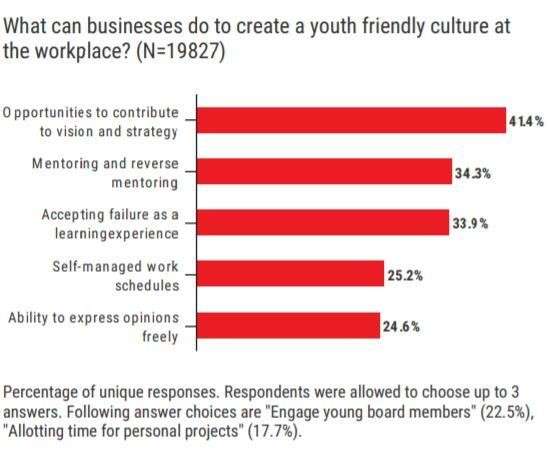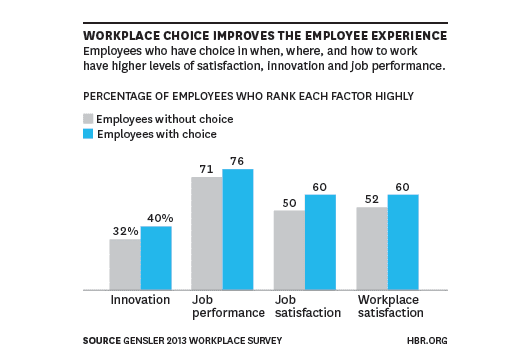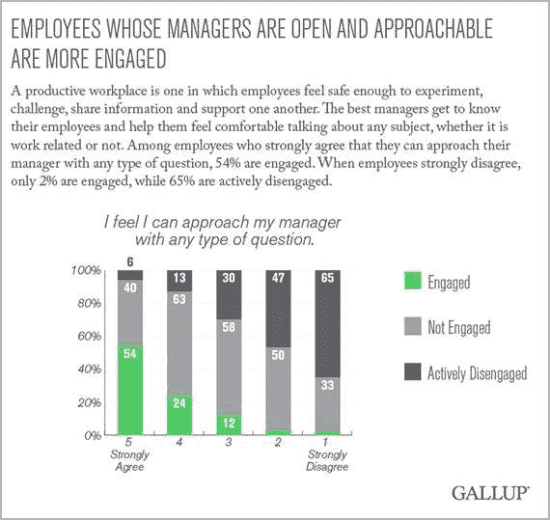Why should our offices and workspaces be youth-friendly?
Young people— those under the age of 30 —constitute more than 50% of today’s global population. Yet, available projections say the figure will hit 75% by 2030.
In all walks of life, this staggering demography is an important factor. In the work and business landscape, it’s the largest percentage of the workforce.
Along with this enormous potential, young people of the digital age are ushering in a new culture, made of highly unique values, perceptions and expectations, to the workplace. Indeed, they are transforming the world of work, to the extent that keeping a youth-friendly organization is no longer optional. It’s crucial to attracting (and retaining) the best talent available today.
A lot of effort goes into studying millennial values and perspectives on a wide range of issues that affect our world. In the Global Shapers Annual Survey 2017, young people (from 186 countries) reveal five essential ways business leaders can create a youth-friendly workplace.

Let’s take a closer look at these:
1. Provide Opportunities to Contribute to Vision and Strategy
A company’s vision statement is key to its success. First, it defines every organization as a distinctive brand. Second, it gives employees a purpose.
Successful business leaders know that it’s essential to align their strategies with the core preferences of young people. But to what extent has this been implemented, when more and more young employees are quitting their job (for better options), as 60% of them feel disconnected from their company’s mission?
According to the survey, young people’s desire to contribute to a vision and to demonstrate their commitment over the long term must be welcomed by business leaders as a kind of loyalty to work. This way, the company vision will become individual goals. Employees will be encouraged to stay on board and give their best to the overall success of the organization. In addition, company strategies will go in tandem with rising demands such as socially responsible investments, growth, and acquisitions.
2. Offer Mentoring and Reverse Mentoring
As a millennial, I’m never ashamed that young people who’re new at organizations need mentoring. I’m actually proud. The reason: my generation, despite the back-breaking challenge of how to clear student loan debt or even get working capital to start a business, is the most entrepreneurial ever. Nevertheless, the influx of young people into the corporate world comes with great passion to learn and acquire expertise. It’s only proper to help young employees with mentorship programmes.
Organizations should have an effective mentoring system that unlocks millennial talent in line with their modus operandi and vision statement. Fortunately, business leaders have a lot to gain in return. With reverse mentoring, millennial employees can help the older employees among senior executives to get to grips with new technologies (such as social networks, artificial intelligence, etc.) and how to maximize them for business goals.
There’s a shifting landscape of employer-employee relations. While young workers want to assume more responsibilities, business leaders can use mentoring to help them gain a better understanding of business and more insights into higher levels of decision-making.
3. Imbibe a Culture that Accepts Failure as a Learning Experience
If one thing makes professionals, it’s continuous learning. During the Q&A that followed his appointment, Microsoft’s CEO, Satya Nadella made an interesting remark when he said, “What defines me … I’m a lifelong learner.”
Millennial employees need to learn more to improve their work experience, and failure is an integral part of that process. One way corporate leaders can successfully handle this is to accept that failure is not always bad. Sometimes, it’s good or, better yet, inevitable in an organizational life.
As the survey says, “accepting failure as a learning experience shows [millennials’] propensity for innovation, risk-taking and exploring the unknown. Such qualities enhance and add value to businesses and allow young people to develop their own skills and professional potential at the same time.” In essence, failures and mistakes help young employees learn and grow faster. Organizations with the culture of continuous learning will make the most of their potential.
4. Allow Self-Managed Work Schedules
There’s a belief that a lack of monitoring makes employees less productive, hence the necessity of a fixed working time and place. How accurate can that be?
Michael Beckmann of the University of Basel is one of the researchers that attempted to answer this question. Beckmann proves that the autonomy factor does not hinder employee performance, arguing, “The emphasis is on completing the agreed tasks, not on being present for a specified amount of time.”
Beckmann, along with the co-authors of “Study on Self-Managed Working Time” finds that “employees with extensive control over their working hours actually work more.” Correspondingly, a study by Harvard Business Review also revealed that employees who have a choice in when, where and how to work have a higher level of satisfaction, innovation and job performance.

The survey says: “Not only are young people soliciting a chance to contribute, but they also care about the work they do, emphasizing the priority they place on integrating their work as a key part of life.”
5. Give Freedom: Ability to Express Opinions Freely
Either in person or electronically, effective engagement is crucial to productivity and, of course, business success. Despite this reality, Gallup’s survey has consistently found that most managers do not create environments in which employees feel comfortable enough to express their opinions freely – especially when they hold contrary views.

There’s the need for maximum engagement at the workplace in order to optimize productivity. Young people, who are known for their energy, curiosity and passion, want a free atmosphere where their opinions do not only gain an audience – they also count towards something. If business leaders want to make the most of them, they should be (more) open to feedback and criticism.
The article was first published here.
Photo by Marjan Blan | @marjanblan on Unsplash.

 5.0
5.0 





















